Is that a downy or a hairy woodpecker? Both are among the most frequent visitors to backyard bird feeders, but they can be tricky to tell apart. Sometimes even we ornithologists aren’t quite sure when we get a passing glance at one of the two most widely distributed woodpeckers in North America. Downy and hairy woodpeckers’ similar coloration and behavioral patterns can stump even the most observant.
Read more about these dynamic, year-round birds and learn some tricks to help you identify them.
More Backyard Birds: Warblers | American Goldfinches | Hummingbirds | American Kestrels | Northern Flickers | Owls
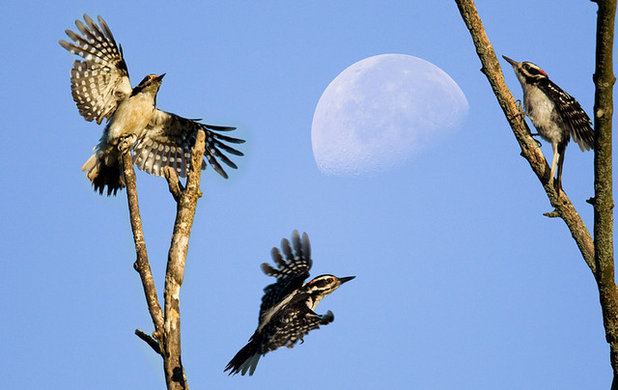
Michaela Sagatova
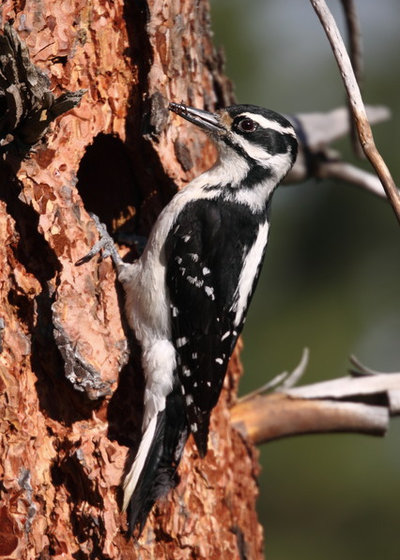 Latin names: Picoides pubescens
Latin names: Picoides pubescens and
Picoides villosusCommon names: Downy woodpecker and hairy woodpecker
Distribution: Both species are found throughout the U.S., except for small portions of the Southwest, southern Texas and Hawaii. The hairy woodpecker can be found as far south as Mexico and Central America. Each has an expansive northern range into Alaska and many parts of Canada.
Photo by Kameron Perensovich
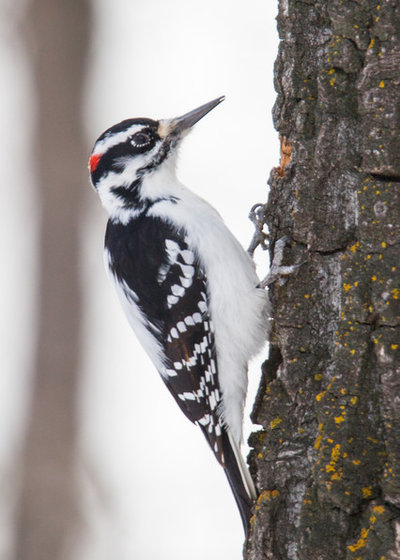 Habitat:
Habitat: Hairy and downy woodpeckers prefer mature forests with areas of open woodland. However, they are highly adaptable birds and reside successfully in orchards, city parks, cemeteries, residential yards and vacant lots.
Insects make up the bulk of their diet, which they often gather by pecking the bark of trees — hence their common name. Woodpeckers also visit bird feeders, preferring suet, with sunflower seeds, millet and peanuts falling close behind.
Photo by David A Mitchell
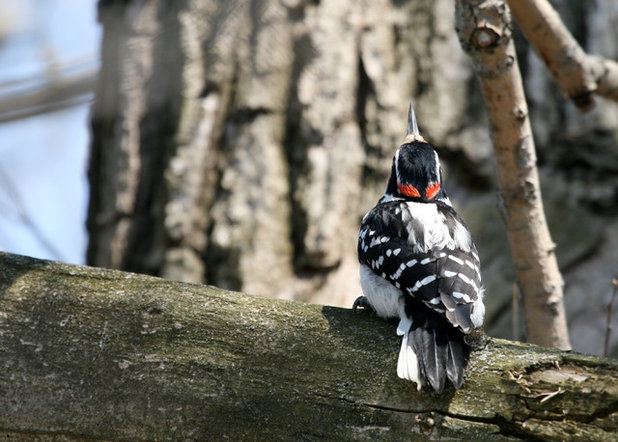 When to look for them:
When to look for them: Year-round
How to identify them: This is where things get tricky. Downy and hairy woodpeckers have similar black-and-white banding on the wings, a large patch of white down the back and two white stripes on the sides of the head. In males, these stripes on the head are accompanied by large, flashy patches of red, while the females have just the black-and-white patterning.
Photo by Matt MacGillivray
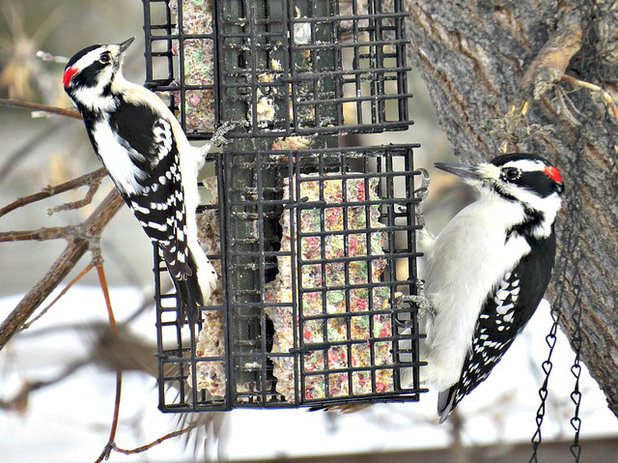
Amy Jansen
The main difference between the two species is their body size and beak length. (Look at this picture for a comparison.) Hairy woodpeckers, right, are larger than downy woodpeckers by a couple of inches. Downy woodpeckers are usually no longer than 6½ inches and weigh 1 ounce, while hairy woodpeckers are usually between 7 and 10 inches long and weigh up to about 3½ ounces. The bill of a hairy woodpecker is longer and more dagger-like in appearance. The downy woodpecker’s bill is shorter than the length of its head. They both have cute tufts at the base of their beaks.
Tip: Beak size is a good way to compare the two species. Just remember, “Downy is dainty, and hairy is huge.”
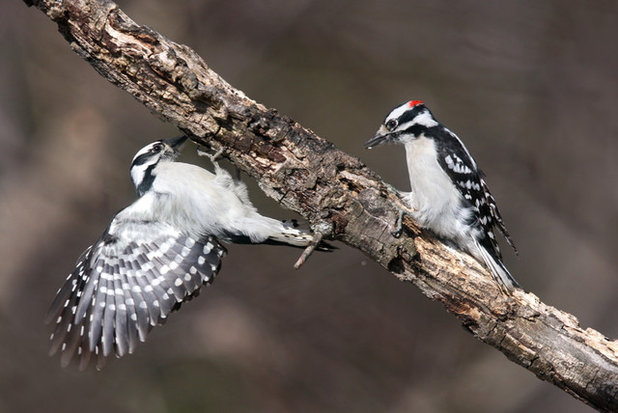
The Nature Nook
In both species, the males and females are about the same size and have similar black-and-white banding. The main difference between the sexes is the bright red patch on the crown of the male’s head. Because of this red mark, distinguishing males from females is easier than telling a downy from a hairy.
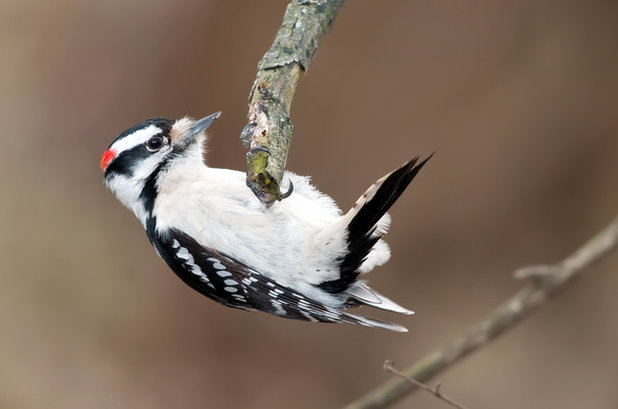 How to Attract Downy and Hairy Woodpeckers
How to Attract Downy and Hairy WoodpeckersWoodpeckers mostly forage on the trunks and branches of hardwood and softwood trees, since insects are their primary food. Downy woodpeckers can also be found drilling into the gall, or abnormal tissue outgrowth caused by parasites, on a goldenrod to extract the maturing larva. Hairy woodpeckers have been spotted enjoying the occasional running sap on a tree left behind from a sapsucker woodpecker’s laboring.
If insects are hard to find, as they are during winter in snowy climates, these woodpeckers will forage for seeds.
Photo by Kelly Colgan Azar
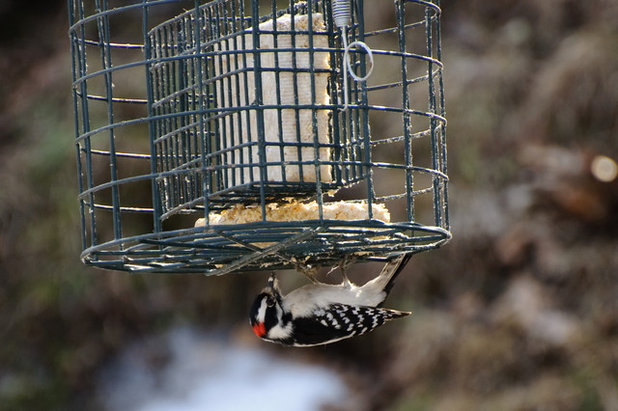 Offer the ideal habitat.
Offer the ideal habitat. Encourage native habitat in your yard with a diversity of trees — hardwoods and softwoods — along with patches of goldenrods and sunflowers.
Ty installing suet feeders if you enjoy feeding birds, as these rank high on the woodpeckers’ list of preferred foods. Suet can be purchased at local bird or hardware stores, but it can also easily be made at home. The birds will also visit a feeder loaded with sunflower seeds, millet, peanuts or all of the above. Downy woodpeckers are particularly fond of visiting backyards to scope out tasty, high-calorie, low-energy-investment meals.
Photo by Alan Huett
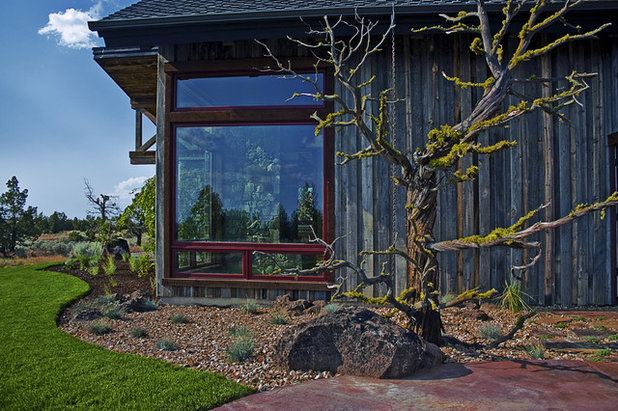
Land Escapes Inc.
Leave dead trees standing. If they don’t pose a risk to structures or people, consider leaving dead trees standing on your property. These so-called snags are a vital resource for any woodpecker, as they provide food, shelter and nesting habitat. You can also cut the trees down to 6 feet to minimize risk.
You will witness some incredible avian activity, and you might even add an artistic focal point to your landscaping.
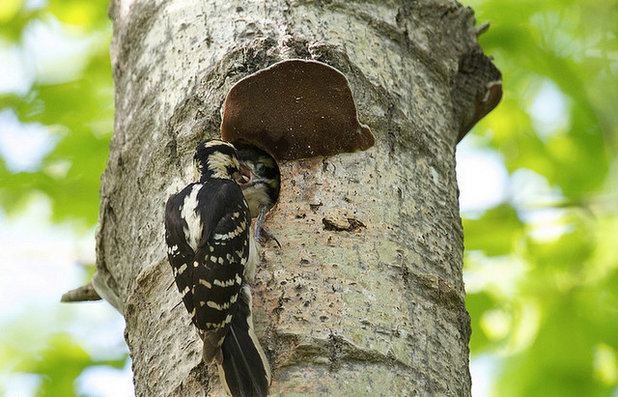
Robert Denton
Hairy and downy woodpeckers raise clutches of three to eight offspring. They prefer nesting in living or dead tree cavities, which is why snags are important. If the tree is living, it may have a fungal infection, which makes the wood easier to excavate for a nest.
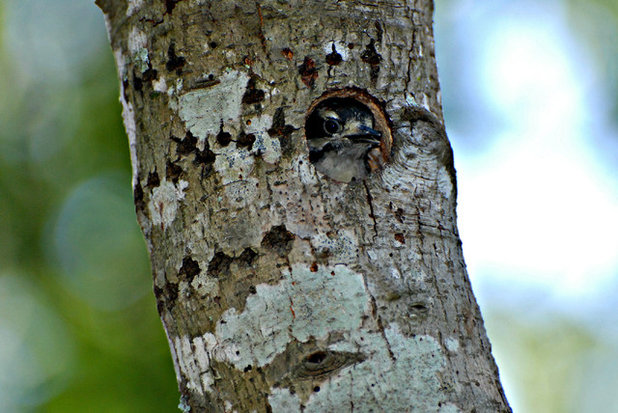
Males and females will excavate a hole and place wood chips where the eggs will be incubated by both parents. When the offspring hatch, both parents will forage to feed their young.
Woodpecker chicks, like most birds, are pretty adorable, particularly when they are old enough to stick their heads out of their nesting cavity to alert their parents of their hunger.
Photo by Matt Elsberry
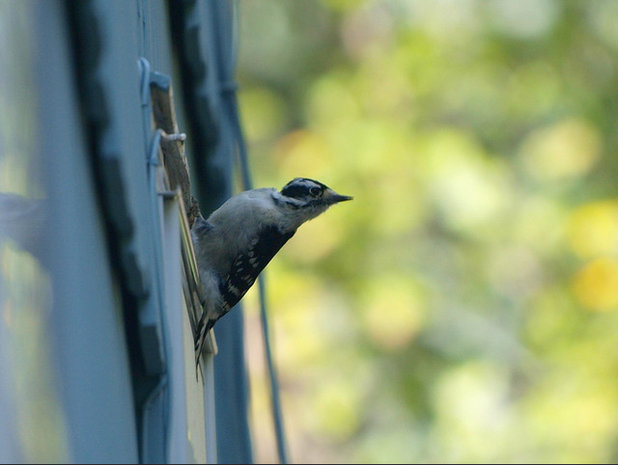
Velocity of Sound
What Can Be Done About the Hammering on Houses?One of the most frequent complaints we hear, from even the most avid bird enthusiast, is about the drumming and damage caused by woodpeckers. The drumming or hammering usually occurs in the spring, when males are protecting mating territories or building nests. But damage can happen any time of year if woodpeckers find your wood siding appealing because it’s infested with insects. These are issues none of us can avoid.
Remain patient and understanding. We share our home habitats with many creatures. Birds, like all wildlife, have lost an immense amount of habitat because of human development. Try various strategies to discourage damage while protecting the birds and maintaining habitat for them on your property.
Reflective streamers are the most effective woodpecker deterrent, according to Cornell University research. Hang them from the area where woodpeckers are hammering or drilling holes.
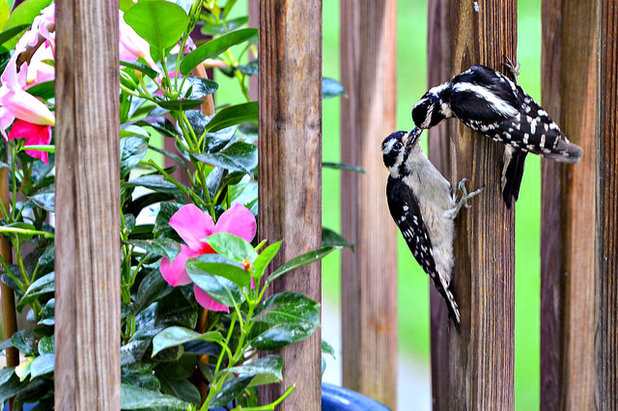
Blake Jacobs
YardMap is a citizen science project developed by the Cornell Lab of Ornithology, designed to cultivate a richer understanding of bird habitat, for both professional scientists and people concerned with their local environment. Thousands of people are documenting their conservation efforts at home to support birds and other wildlife in their yards.





